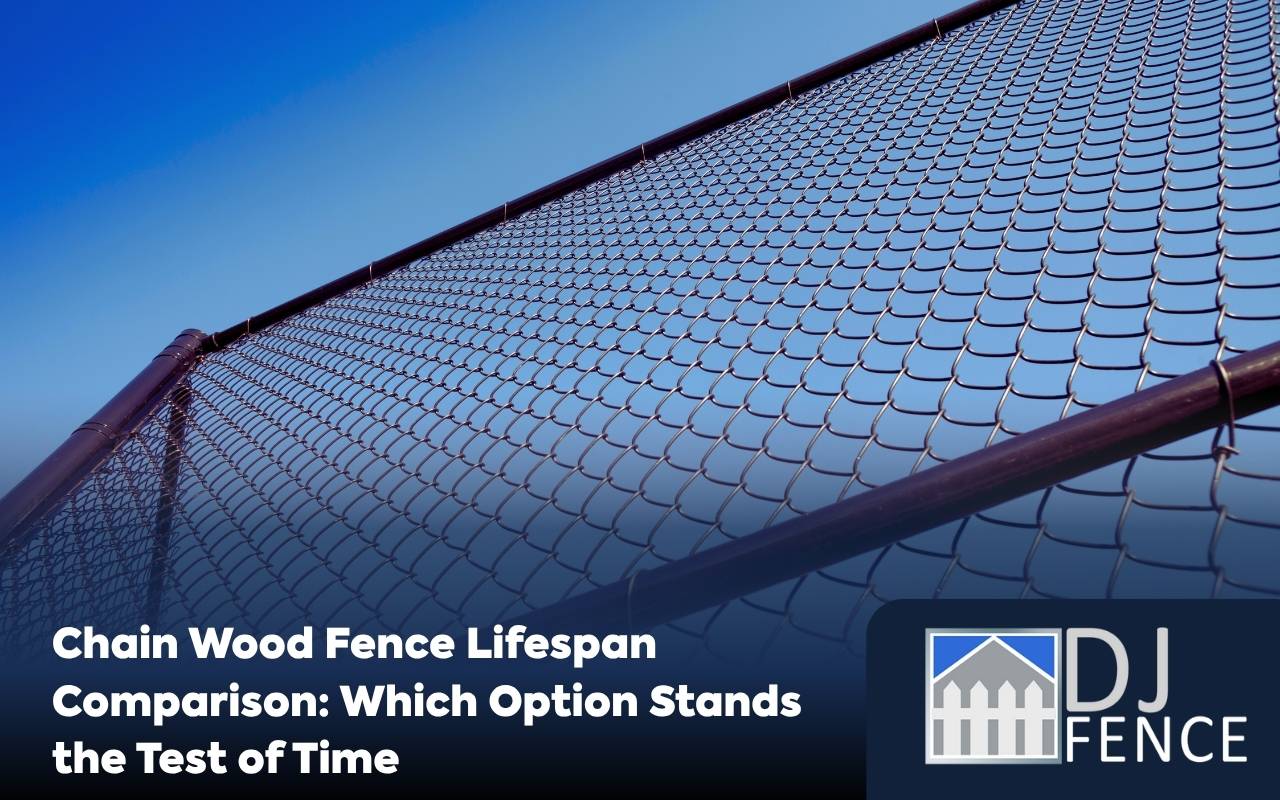
Every homeowner desires a stylish property that also remains secure. The fence often becomes the first line of defense. But when choosing between chain link or wooden fences, how do you know which option lasts longer? In fact, the battle for supremacy in a lifespan comparison chain wood has continued for decades. Each type offers unique strengths and clear challenges. This post explores which fence may truly stand the test of time.
Durability and Maintenance of Chain Link Fences
Chain link fences use galvanized or vinyl-coated steel, creating a sturdy barrier that resists bending and pressure. When considering a lifespan comparison chain wood, chain link fencing often takes the lead. Steel posts anchored in concrete help the structure endure storms, winds, and years of use.
- Rinse with water to remove dirt and grime.
- Apply rust-inhibiting spray annually.
- Replace small sections without reinstalling the entire fence.
Such simple upkeep reduces costs and extends longevity. If durability matters most, chain link fences are strong candidates. Learn more about their advantages at Chain Link Fence Materials.
Pros and Cons of Wooden Fences
Wooden fences add classic charm and warm natural appeal. Cedar and redwood resist decay better than other woods. Styles such as picket or board-on-board enhance curb appeal and increase privacy. Still, maintenance demands remain higher than metal fences.
- They require regular sealing, painting, or staining.
- They are vulnerable to rot and insects.
- They can crack, fade, or warp over time.
For deeper insights into timber fencing, see Best Wood Fence.
Impact of Weather on Chain Link Fences
Although resilient, chain link fences face some weather challenges. Moisture, salty air, and temperature shifts can create rust. Annual inspections detect issues early. Vinyl coatings resist damage, though UV rays may fade plastic layers. Nevertheless, compared with wood, chain link fences usually withstand extreme climates better.
Rot Resistance and Wooden Fence Maintenance
Wood absorbs moisture and develops rot without treatment. Pressure-treating or sealing helps delay decay. Maintenance includes regular cleaning and resealing. Pest inspections are necessary, since termites or ants damage posts and panels. While care-intensive, proper upkeep extends wooden fences’ lifespans.
Longevity Factors: Chain Link vs. Wood Fences
A lifespan comparison chain wood reveals a clear difference. Chain link fences often reach 30–40 years of service. Wooden fences last 15–25 years with attentive care. Site conditions also matter. Soil, drainage, and climate play key roles. Still, chain link usually keeps the advantage for overall longevity.
Cost Considerations for Fence Options
Cost involves both installation and ongoing upkeep. Chain link fences often cost less upfront and require little maintenance. Repairs are simple and affordable. Wood fences may look richer but add long-term expenses through stains, repairs, and protective finishes.
Customization Options: Wooden vs. Chain Link
Wood offers endless customization. Pickets, lattice tops, and board patterns reflect personal style. Paints and stains create unique appearances. Chain link customization is more limited but still possible. Slats, vinyl coatings, or climbing plants enhance privacy and aesthetics.
To learn how vinyl compares, check out Vinyl Fence Benefits.
Environmental Impact of Fence Materials
Chain link fences use recyclable steel, though coatings complicate disposal. Wood, if responsibly sourced, remains renewable. Untreated wood decomposes naturally, while treated wood requires careful disposal. Choosing eco-friendly stains and certified lumber reduces environmental impact.
FAQs About Fence Longevity
How long can a chain link fence last?
A well-maintained chain link fence often endures 30 to 40 years, especially with rust protection and concrete footings.
What reduces the lifespan of a wooden fence?
Excess moisture, pests, and lack of sealing shorten wooden fence lifespans significantly if not properly managed.
Which fence type requires less maintenance?
Chain link fences need less care. Wooden fences demand regular sealing, painting, and pest control.
Can climate affect fence longevity?
Yes. Moist climates favor chain link durability, while dry conditions allow wood to perform better if well maintained.
How can I extend the life of my fence?
Conduct seasonal inspections, apply treatments, and promptly repair damages. Proper installation with concrete bases also extends service life.
Practical Tips for Extending Fence Lifespan
Whether you choose metal or wood, proactive care matters. Clean regularly and reseal wood every few years. Apply rust inhibitors on metal and replace weak parts early. Install with concrete and ensure good drainage. Professional installation ensures long-lasting results. A smart lifespan comparison chain wood shows that attention to upkeep narrows the gap between both options.
Making the Best Decision for Your Property
Choosing between chain link and wood involves balancing style, longevity, and upkeep. Chain link delivers durable, low-maintenance performance. Wood provides classic beauty but requires steady care. By weighing both sides, you can select a fence that enhances curb appeal and security. Ready to protect your property? Chain Link Fence Materials and Best Wood Fence are great places to start exploring.
